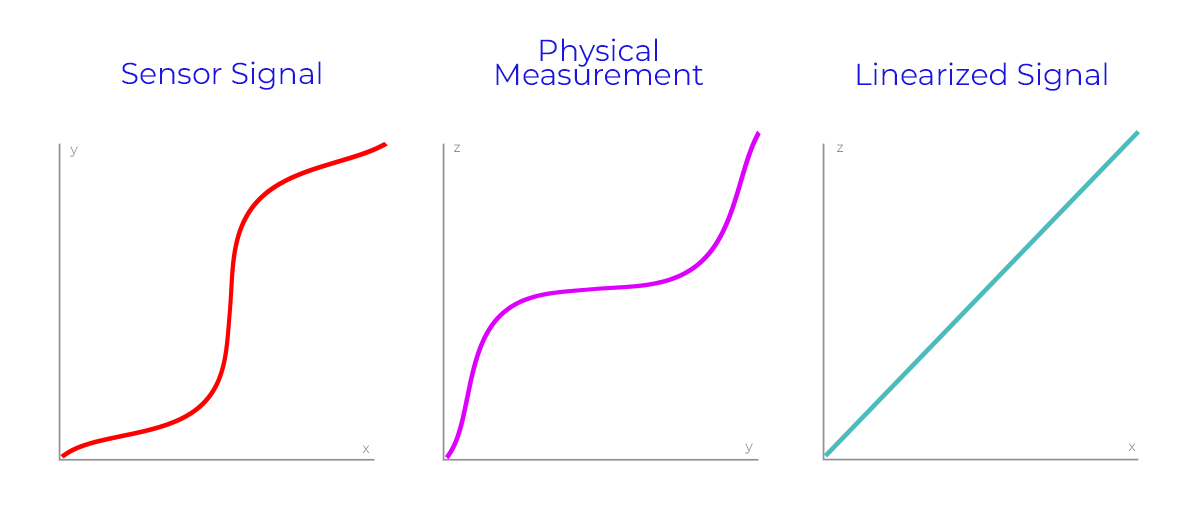Because signal types and strengths vary from one analog signal to another, without a way to optimize the signals, there would not be an accurate way to measure them. Therefore, signal conditioning is one of the most important components to any sensing system. In this post, we introduce the concept of signal conditioning, as well as give examples of different types of signal conditioners.
A signal conditioner converts an analog signal from a processor sensor into one that is suitable for further processing.
Signal conditioning come in many forms, but in this post, we’re focusing on isolation, amplification, linearization, and filtering.
Isolators protect and preserve valuable measurements and control signals, as well transmitters and receivers, from the damaging effects of noise, transient power surges, internal ground loops, and other hazards that may be present in the environment.

Amplifiers increases the input signal strength (amplitude) to a level suitable for digitization by the data acquisition (DAQ). With low-voltage output sensors such as thermocouples and strain gauges, amplification can increase the resolution of the measurement. A thermocouple produces a temperature-dependent voltage, which can be interpreted to measure temperature. As the name suggests, a strain gauge simply measures strain on an object. In this case, a strain gauge measures the strain on the sensor system.

Linearizers are often used for thermocouple signals. When the signals produced by a sensor don’t have a straight-line relationship with the physical measurement, linearization is necessary.

Filters improve the performance of a sensing system by eliminating unwanted frequencies on a spectrum. By filtering out the noise errors, they create a clean and consistent signals for precise measurement.

Latest Posts

AESAs: Active Electronically Steered Arrays
AESA stands for Active Electronically Scanned Array or Active Electronically Steered Array.

Fractal Antennas, Explained
While fractals antennas have many complexities that can be discussed at length, in this post, we will examine the basics of fractal antennas.

What is a Smart Antenna?
The textbook definition of a smart antenna is “an antenna array with digital signal processing algorithms, which identify spatial signatures.” Using these spatial signatures, the smart antenna calculates beamforming vectors, which are then used to track and locate the antenna beam on a mobile or target.
